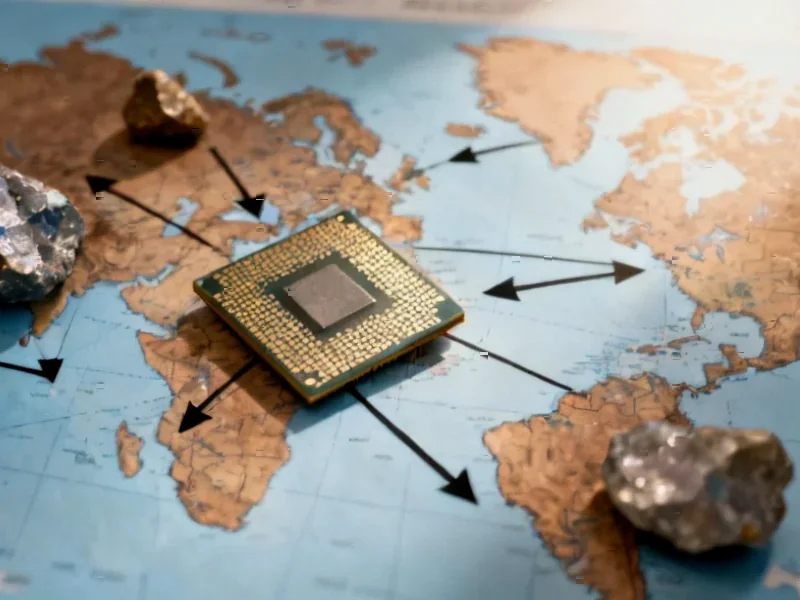According to TheRegister.com, last week’s US-China trade talks resulted in Beijing lifting restrictions on rare earth exports and terminating investigations targeting American semiconductor companies including Nvidia, Qualcomm, and Micron. Singapore police seized assets worth over S$150 million ($115 million) linked to Chen Zhi, who faces US charges for operating forced-labor scam compounds in Cambodia. Meanwhile, Google announced it will provide free Gemini Pro AI accounts to all subscribers of Jio’s unlimited 5G plan in India, potentially reaching over 200 million users. Australia’s securities regulator and federal police executed search warrants at WiseTech Global related to share trades by former CEO Richard White, while IDC predicted India’s enterprise infrastructure market will grow 16.4% by 2025, reaching approximately $6 billion in spending. These developments signal significant shifts across global technology markets and regulatory landscapes.
The Rare Earth Chess Game
The White House announcement about China lifting rare earth export restrictions represents a strategic concession with profound implications for global technology manufacturing. Rare earth elements are essential for everything from electric vehicle motors and wind turbines to smartphones and military hardware. China currently controls approximately 80% of global rare earth processing capacity, giving Beijing significant leverage in technology supply chains. While this temporary easing may relieve pressure on Western manufacturers, it doesn’t address the fundamental vulnerability of concentrated supply chains. The timing suggests both sides are prioritizing economic stability over strategic competition, but this could be a temporary truce rather than a lasting resolution.
Semiconductor Investigation Thaw
China’s agreement to terminate antitrust and anti-dumping investigations against Nvidia, Qualcomm, and Micron represents a significant de-escalation in the chip wars. These investigations had been widely viewed as retaliatory measures following US export controls on advanced semiconductors. The Chinese Commerce Ministry’s statements about Nexperia suggest Beijing is carefully calibrating its responses to avoid damaging its own automotive industry, which depends on these legacy chips. This creates an interesting dynamic where both superpowers are discovering mutual dependencies that limit how far they can push trade restrictions without harming their own strategic industries.
India’s AI Mass Adoption Strategy
Google’s partnership with Jio represents one of the largest attempted AI rollouts in history, potentially bringing sophisticated AI tools to hundreds of millions of users overnight. The Google-Jio collaboration is particularly significant because it targets younger users (18-25) first, essentially creating an entire generation of AI-native consumers. The inclusion of 2TB storage specifically for WhatsApp backup acknowledges Meta’s dominance in Indian digital life, showing Google’s pragmatic approach to market penetration. This move could accelerate India’s digital transformation by several years, but it also raises questions about data sovereignty and whether this creates excessive dependency on foreign technology platforms for critical infrastructure.
Enforcement and Cross-Border Coordination
The Singapore asset seizures connected to alleged Cambodian scam compounds demonstrate increasingly sophisticated cross-border law enforcement cooperation against digital crime networks. The US Department of Justice indictment describes sophisticated “pig butchering” crypto scams operating at industrial scale, highlighting how digital fraud has evolved into organized criminal enterprises. Meanwhile, the WiseTech investigation in Australia shows regulators are taking tougher stances on insider trading in technology sectors, particularly during blackout periods when company insiders possess material non-public information.
Infrastructure Investment Disparities
The IDC forecast for India’s enterprise infrastructure growth reveals both impressive progress and concerning gaps. While 16.4% growth sounds substantial, the absolute numbers—projected to reach around $6 billion—pale in comparison to the $82 billion US organizations spent on compute and storage hardware in just Q2 2025. For a country with four times America’s population, this investment disparity highlights the enormous catch-up required. The focus on AI-ready infrastructure and compliance with data localization requirements shows Indian enterprises are thinking strategically about building competitive digital ecosystems, but the scale of investment needed to close the gap remains daunting.
Geopolitical Positioning and Space Cooperation
The European Space Agency’s decision to establish a permanent Tokyo office reflects broader strategic realignments in technology and research partnerships. As US-China tensions create uncertainty in some technology sectors, other nations are strengthening alternative alliances. The ESA-JAXA collaboration represents a third pole in space exploration and technology development, potentially creating opportunities for countries seeking to avoid choosing sides in the US-China technology competition. This pattern of diversification is becoming increasingly common as nations seek to build resilient technology ecosystems less vulnerable to geopolitical shocks.




